TINNITUS TREATMENT TOOLBOX
A Guide for People with Ear Noise
J. L. Mayes
Copyright 2010 J. L. Mayes.
All rights reserved. No part of this publication may be reproduced, stored in a retrieval system, or
transmitted, in any form or by any means, electronic, mechanical, photocopying, recording, or
otherwise, without the written prior permission of the author.
Notice: The information in this book is true and complete to the best of our knowledge. Case studies and treatment plans described are for illustrative purposes only, and do not represent any real person. The book is intended only as a supplementary guide to medical or tinnitus treatment. It is not intended as a replacement for sound medical, tinnitus or sound sensitivity advice from a physician, audiologist, tinnitus specialist or counselling specialist. All recommendations made herein are made without guarantees on the part of the author or Trafford Publishing. The author and publisher disclaim all liability with the use of this information.
ISBN: 978-1-4269-1215-3 (sc)
ISBN: 978-1-4269-1216-0 (hc)
ISBN: 978-1-4269-1217-7 (e)
Library of Congress Control Number: 2012915124
Trafford rev. December 06, 2012
 www.trafford.com
www.trafford.com
North America & international
toll-free: 1 888 232 4444 (USA & Canada)
phone: 250 383 6864 fax: 812 355 4082
Contents
I would like to thank Bud and Pauline Wilkinson who made it possible for me to become an audiologist, as well as everyone who has given me encouragement, support or helpful feedback while writing this book: Sharon Adelman, Sandra Aristizabal, Kristina Bingham, Dr. Nirvana Kiarostami, Carol Lau, Murray Leslie, Clarissa Mayes, Samantha Mayes, Marilyn Miller, Jeanne Moskalyk, Kukuh Noertjojo, Glynnis Tidball, Dr. Anna Van Maanen, Dennis Wilkinson, and most importantly of all Diane Wilkinson and Brad Mayes.
This book is dedicated:
To my husband for his unwavering love and support.
To my daughters for my joy and inspiration.
To my family for their devotion.
To my colleagues for their wisdom and dedication.
To my clients for their courage, humour, and perseverance.
Through knowledge, creating health. University of British Columbia. Faculty of Medicine Vision Statement.
Tinnitus is a name given to noises in the ears that people hear when there is no outside noise source. In other words, you are hearing something that nobody else can hear. It is extremely common. Why dont people talk about it? It is probably because tinnitus is also invisible to other peoples eyes and ears. People with tinnitus often feel uncomfortable telling other people I hear noises in my ears (or head), but nobody else can hear them. As an audiologist doing hearing tests and counselling, I have often been the first person people have told about their tinnitus. I have also personally had tinnitus for over 20 years, and telling people about it has never come up naturally in conversation. Tinnitus is very much a hidden symptom.
Tinnitus is commonly pronounced [tin-it-us] or [tin-night-us]. Both pronunciations are fine. Tinnitus can be described as different sound types (or combinations of sounds) including ring, roar, hiss, screech, whistle, buzz, click, hum, etc. Tinnitus comes from the Latin and means jingling ear. Usually only the person with the tinnitus hears it. Tinnitus is not an imaginary sound. Tinnitus may be in one ear, both ears, or in the head. It may be there constantly or occasionally. It may be any loudness from soft to loud. Typically it changes from time to time. There is a rumor that Vincent Van Gogh may have cut off his ear in an attempt to get rid of tinnitus.
Tinnitus is not a disease, illness or disorder. As this book will explain, tinnitus is naturally produced by the hearing system. Tinnitus may be temporary or permanent (chronic). There are simple and effective approaches available to help people overcome any distress they experience from this harmless sound. In case there is a medical cause, it is always recommended you get the approval of your doctor and/or ear specialist before you begin a tinnitus treatment plan. The presence of the following conditions always requires medical attention. See your doctor if you have:
Newly started tinnitus.
Tinnitus in one ear only.
Pulse-like tinnitus.
Tinnitus that sounds like voices.
Sudden or rapidly worsening tinnitus.
Better hearing in one ear than the other.
Dizziness (vertigo) or imbalance.
Sudden or rapidly worsening hearing loss in one or both ears.
Drainage, pain or discomfort in one or both ears.
Anxiety, depression or suicidal thoughts.
In many cases, there is no specific medical condition found as the tinnitus cause. This is why tinnitus is often described as idiopathic or cause unknown. After finding out there is no medical treatment needed, many people experience increased tinnitus distress after being told to just learn to live with it without any practical how to recommendations. Whether there is an underlying medical condition to your tinnitus or not, the same non-medical tinnitus treatment approaches work. I know that people with tinnitus can significantly improve their sense of well-being through treatment tools.
I wrote this book to help share the message that there are many treatment options available that can greatly help people with tinnitus distress. Successful coping is a realistic goal. People get the most benefit from a tinnitus treatment program customized for their individual needs. The tinnitus care provider(s) involved will depend on the treatment needed. Treatment takes time. It takes time to incorporate changes (treatment strategies) into your daily life. It takes time to see results. The longer you have had tinnitus, the longer it typically takes to notice change. Tinnitus is a complex condition. A simplistic approach is not realistic. You will likely need to make changes for your ears, mind and body to maximize success.
This book does not give a quick fix or a cure. It does give an overview of available treatments to help you become familiar with the tools to consider for your personal tinnitus treatment toolbox. Try the tools that speak directly to your individual needs, and keep using the ones that are helpful or beneficial. These approaches are typically most effective when the person with tinnitus has the support and guidance of a sympathetic and knowledgeable care provider. This book cant replace specific medical or tinnitus treatment advice from your care provider(s). Only they can answer questions specific to you, and help make sure the choice of care is appropriate.
Authors Case: In 1986, I suffered whiplash and concussion in a motor vehicle accident. While most of my injuries healed over time, I was left with a loud buzzing in my ears called tinnitus. I repeatedly went to doctors and ear specialists asking why I now had this noise and what I could do about it. I was told it was nothing and I should just learn to live with it. Because of my interest in tinnitus, I became an audiologist. It was disappointing to discover that there was little to offer at that time to people suffering from bothersome tinnitus.
My tinnitus grew worse. It was a non-stop buzz, overriding other noises and voices around me. Sometimes it would escalate for a minute or two to a piercing shriek before settling back down. At these times I would panic. If it stayed like that, I would never be able to stand it. I decided quiet was the answer. I fought with my husband over the radio and TV volume. I stayed away from groups of people or noisy places like malls or restaurants.
Life became restricted. Due to other medical reasons involving chronic pain and fatigue, I went on disability leave. Despite spending several months in the quiet of my home, there was no improvement in my tinnitus. I read of various potential triggers and began to keep a detailed diary, searching for some change I could make in diet or routine that might lead to a cure. My tinnitus became even worse. Over a decade passed of listening to non-stop tinnitus from the moment I woke in the morning until I tried to fall asleep at night. I thought that nothing could ever help.
Next page
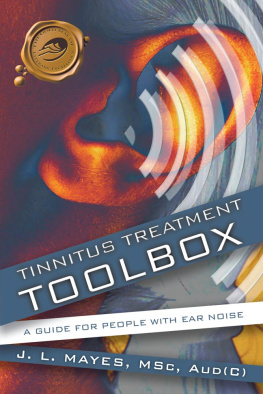
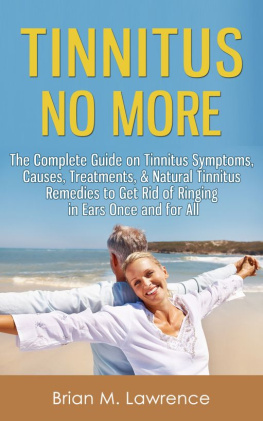
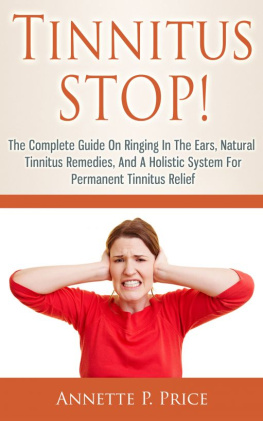

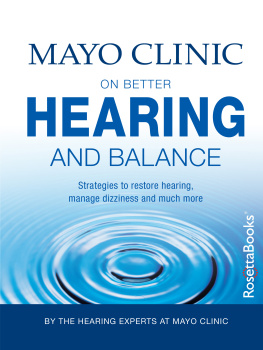

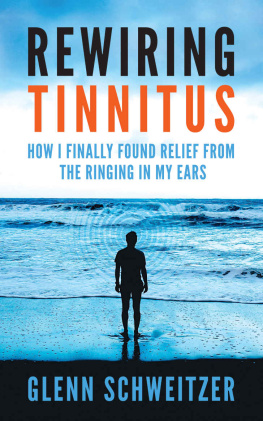
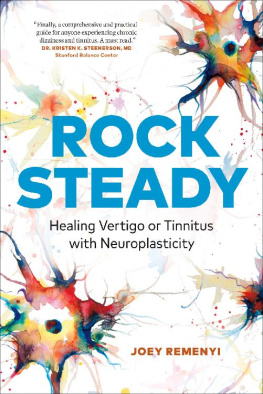
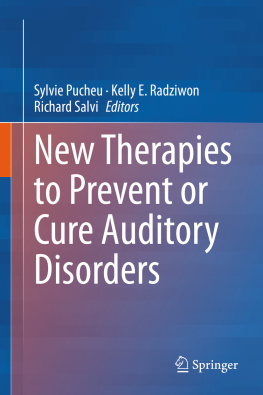
 www.trafford.com
www.trafford.com